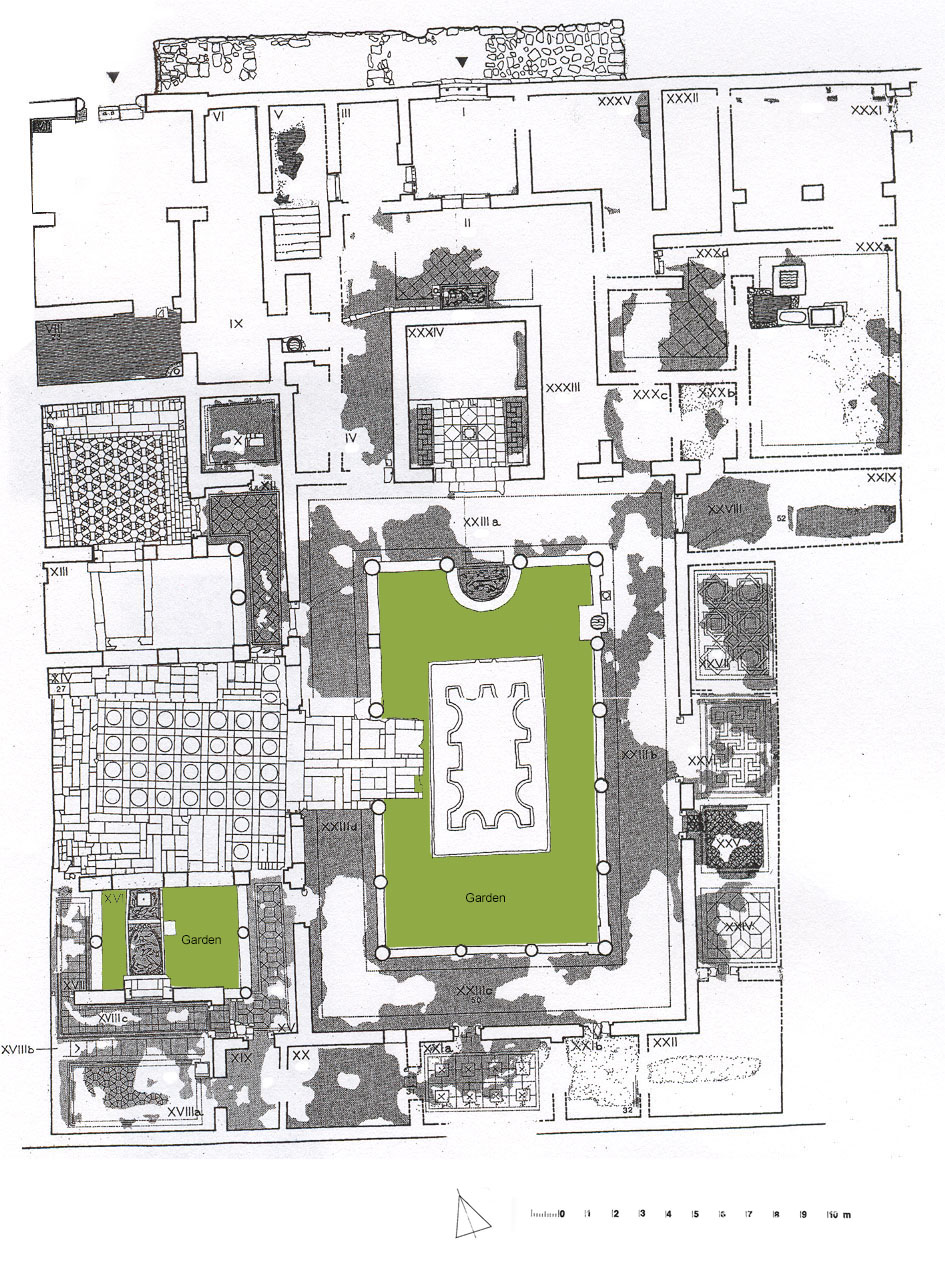House of the Cascade (Maison de la Cascade)
Province
Africa Proconsularis
Africa proconsularis (Pleiades)
Province Description
The history of Roman Africa begins in 146 BC with the destruction of Carthage and the establishment of the province of Africa in the most fertile part of the Carthaginian Empire. The new province covered about 5000 square miles (17,172 square kilometers) of the northern part of modern Tunisia. A praetor governed the area from his headquarters at Utica. The Romans inherited a thriving agriculture developed by the Carthaginians. The climate was hospitable. Wheat and barley were the most important cereals; wine and olive oil were also produced and there were various fruit trees.
Location
UTICA (Utique)
UTICA (Utique) Tunisia(Pleiades)
Location Description
Her geographic situation made of Utica one of the oldest and well-known Phoenician settlements. In 146 B.C, Utica became the capital of the newly created province of Africa and the residence of the governor. With the triumph of Caesar and the resurgence of Carthage, Utica's supremacy would gradually decline under the empire. In 36 B.C. it became a municipium and a colony under Hadrian.
The city was laid out on a grid plan. Numerous buildings have been uncovered, among them the forum, several temples and baths, an amphitheater, a circus, and opulent houses. Many of these buildings of the Republican period were, during the imperial era, replaced by others larger and more luxurious. This explains the existence of two theaters for example, the one fitted into the side of the hill, the other built in open country. Enormous cisterns were constructed, fed by an aqueduct. Still extant on the summit of the acropolis overlooking the town, is a quadrangular edifice habitually referred to as “the citadel,” which could perhaps be simply a water tower.
Garden
House of the Cascade (Maison de la Cascade)
Keywords
Garden Description
This house, the largest in the insula II (lots 2,3,8,9,10), was given its present form in the second century. A large peristyle with elaborate viridarium dominated the S part of the house (Plan view, Fig.1). The large shallow pool in the center of the garden occupied a rectangular area that was largely filled by a huge marble-faced masonry construction with semicircular and rectangular niches that gave the pool a baroque shape. The marble-faced construction probably held an important sculpture. Water from the fountain jet spilled from the marble-lined channel cut into the base and then spilled into the pool. The sundial, today at the edge of the base of the pool, is not in its original position.
Extending into the garden from the two central columns on the N was a semicircular pool (which faced the large room (XXXIV), decorated with a well preserved mosaic showing an Eros fishing from a boat, surrounded by fish and other sea animals. A wide entrance on the E side of the garden led through the portico to the triclinium, by far the largest room in the house.
Opening off of the triclinium to the S was a smaller area enclosed by a portico on three sides. The dominant feature was the shallow square basin (1.92x 1.2 m) decorated with a fish mosaic and the adjacent mosaic panel from which the house is named. In the cascade panel, two fishermen are pulling in a vast net full of fish and sea animals. The soil on each side of the cascade was probably planted.
Maps
Plans

Fig. 1: Plan of the House of the Cascade (CMT, plan 5,7)
Dates
1st-2nd century CE
Bibliography
- Alexander, M. A., Ennaifer, M., Corpus des Mosaïques de Tunisie, Utique, insulae, I-II-III, INA, Tunis, 1973, pp. 19-56, plan 5,7 and plates 8, 9, 25, 63. (worldcat)
- Bullo, S. and F. Ghedini,. Amplissimae atque ornatissimae domus: l'edilizia residenziale nelle città della Tunisia romana, Rome: Edizioni Quasar, 2003, pp.351-354. (worldcat)
- Février P.-A., "Image, imaginaire et symbolisme. A propos de deux maisons du Maghreb antique", in Mosaïque, Recueil d'hommages à Henri Stern, Paris,1983, pp. 159-162. (worldcat)
Pleiades ID
TGN ID
Contributor
Wilhelmina F. Jashemski (WorldCat Identities: lccn-n80037970)
Amina-Aïcha Malek (ORCID: 0000-0002-1628-615X)
Publication date
21 Apr 2021